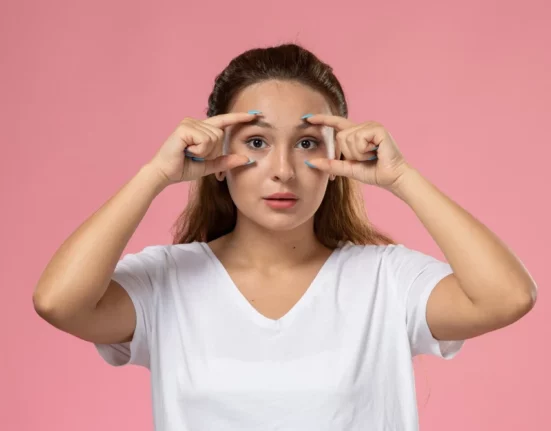Technology is becoming more integral to our lives now than it ever was before. We are seeing self driving cars, phones that can tell us jokes or lights that can change with a person’s mood. These are marvelous use cases, but what about the people with some disability? Is technology playing an equally noteworthy role in this area?
I’m here to tell you that it is. It’s called assistive technology and there are many layers to it.
Let’s first talk about what it really is and then we’ll move on to how it helps people with disabilities.
What is Assistive Technology?
Any adaptable device or service that gives back a disable person his freedom to work independently may be considered as assistive technology (AT).
It’s an assistive gadget or a smart software specifically designed to aid people with physical or learning disabilities.
“For people without disabilities, technology makes things easier. For people with disabilities, technology makes things possible.” – Radabaugh 1988
How does Assistive Technology help?
Life could be a lot more challenging if you’re unable to hear properly, see correctly and walk freely.
That is why Assistive Technology aims at promoting independence by enabling people to carry out tasks that they were earlier unable to accomplish on their own.
Assistive Technology leverages various techniques and artificially enhanced methods of interaction for people with physical or learning impairments.
With technology advancing by leaps and bounds in the past few years, you may need to update your knowledge about the available assistive technologies. It is important to thoughtfully consider what tools or technologies will be most appropriate to fulfil one’s unique needs.
Read on to get an overview of some effective and common assistive technologies in the market.
Mobility Impairments
Wheelchairs: Wheelchairs are manually or electrically driven seats used by physically disable people who face difficulty in sitting or walking.
It allows them to perform daily self-care activities on their own, which include bathing, toileting, dressing and grooming.
Wheelchairs come with variations, some are manually operated with people pushing them to move forward while others come with motors and joysticks inserted for easy mobility and to promote the maximum use of his/her extremities.
Walkers : A walker is a heighted, adjustable frame that helps one in maintaining balance while standing or walking.
It is as tall as a person’s waist and twice as wide. It often has wheels attached to its front legs for easy movement but that greatly depends upon the users convenience. It gives additional support to a physically impaired person.
Prosthetic Limb : A Prosthetic limb is a device used to replace a limb which one lost as a result of some disease, trauma or accident.
It is an artificial assistance used to compensate the loss. How well the prosthesis might function depends upon the users anatomy. A motivated user increases the likelihood of its success.
Visual Impairment
- Screen Readers: A reading assistant software helping visually disabled people to read the text on desktop screens.It enlarges or reduces the size of text or images as per the unique needs and offers different ways of navigating websites, such as hierarchical menu and searches. Examples include JAWS for Windows and voice over for mac.
- Navigation Assistance: Navigation Assistance for people with visual disabilities refers to a system installed in automobiles and phones, to provide assistance with exact locations, routes and directions to reach a certain destination.This form of assistive technology is widely used by partially sighted people and completely blind people. It uses voice commands to navigate.
It works by saving pin locations in the form of recordings, automatically announces any street intersections or hurdles, finds out the shortest way to the destination, allows the exploration of travel route for a far away destination before travelling there.
Some examples include Corsair GPS and Cydalian for Android while Aridain GPS and blindsquare for ios.
- Wearable Technologies are some intelligent compact devices that can be easily carried worn as an accessory.Gadgets such as IrisVision are hitting the market with most advanced features of full zoom, colour adjustments, easy controls, voice commands and extra wide field view mode. It is efficiently being used against many visual impairments such as macular degeneration, Retinitis Pigmentosa, glaucoma and diabetic retinopathy.
- Screen Magnifiers Screen Magnifiers are installable magnification programs that enlarge portion of original screen content, to bring it to focus. This enlarged portion does not only include the content and text but also the cursor and pointer are suitably zoomed for user convenience.This software interfaces with a desktops graphical output to present bold screen text before the user.
Widely used screen magnifiers include Microsoft Magnifier (2).
- CCTV Aids: These devices work on the principle of enlarging, magnifying and printing images, artwork or whatever else is placed under the camera. Moreover, they offer adjustments such as contrast and brightness and a fairly wide field of view on the monitors.It enables people with low vision to read different forms of print media with greater ease.
Commonly used models of CCTV devices have a movable tray to grip and support the reading or writing materials you work with.
Hearing Impairments
- Hearing Aids: A hearing aid is a small wearable, battery operated device composed of a microphone, amplifier and receiver. It helps you in hearing better by picking up the sounds from around and sending you back their amplified versions. Hearing aid assists in hearing clearer and louder.Analog and digital are the two types of hearing aids available. The former is relatively simple and cheap as it offers no adjustments and works on a simple principle, whereas the latter one allows automatic volume control and is more powerful.
- Assistive Listening Devices: Personal Amplifiers, infrared systems, FM systems, bluetooth are some potent assistive devices that work on the principle of gathering sounds and make them louder wherever the extra boost is required. Places with insufficient acoustic such as restaurants and large setups can expose the shortcomings of hearing aids and that is where ALDs improve the speech to noise ratio.
Assistive Technology Improving the Quality of Life
The purpose of assistive technology is to master the gap between what an impaired person wants to do and what the existing technological infrastructure allows them to do. It consists of devices and software that can be efficiently used to break the barriers experienced by disabled people, stopping them from playing an equal role in all aspects of life.





